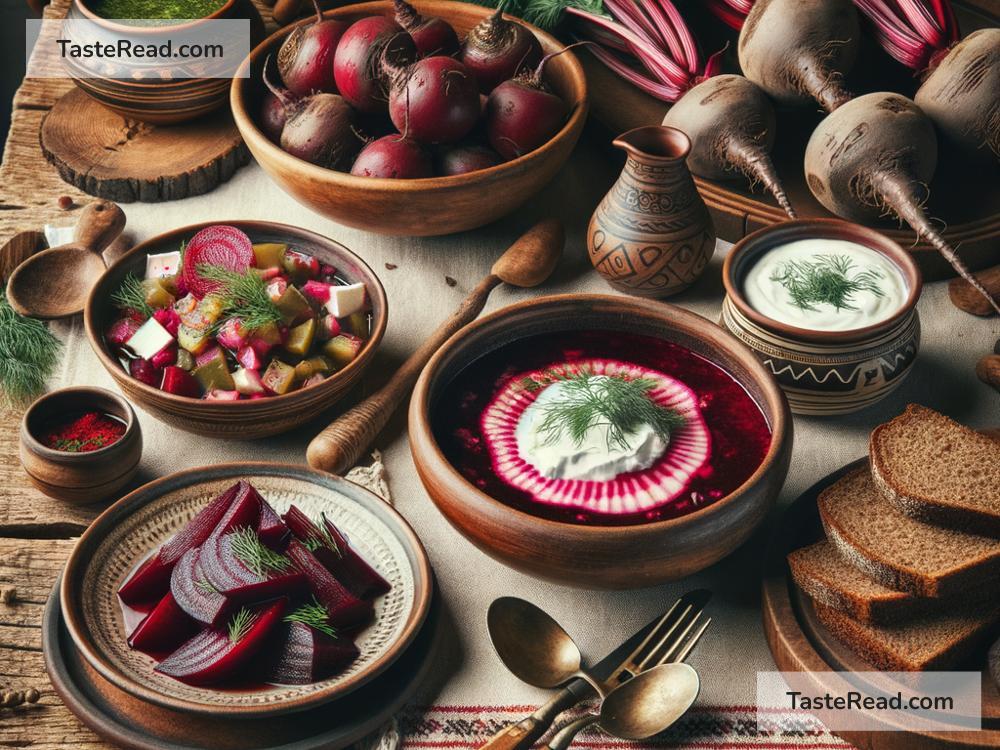The Curious Story of Beets in Eastern European Cuisine
Beets are a humble root vegetable that have a special place in Eastern European food. These vibrant, purple-red vegetables are not only tasty but also full of history, culture, and nutrition. When people think about Eastern European cooking, dishes like borscht, beet salads, and pickled beets often come to mind. But how did beets become such an important part of the region’s cuisine? Let’s discover the curious story behind this colorful vegetable.
The Origins of Beets
Beets have been around for thousands of years. They started as wild plants that grew near the Mediterranean Sea. Ancient Romans were among the first to eat beets, though they mainly used the leafy greens rather than the root itself. Over time, farmers learned how to grow beets with thicker, larger roots. These new, improved beets began spreading across Europe, especially to Eastern Europe, where they would become a staple food.
Eastern Europe has a cold climate with long winters. Beets are hardy vegetables that grow well in this environment. They can survive in poor soil, store for months, and stay nutritious even during cold seasons. For many families, beets offered something fresh and healthy during times when other vegetables were unavailable. This practicality made beets a favorite in homes across Russia, Ukraine, Poland, Romania, Lithuania, and other surrounding countries.
Beets and Borscht: A Famous Partnership
One of the most famous Eastern European dishes is borscht, a beautiful beet soup that comes in many variations. Although borscht is often associated with Russia and Ukraine, it’s loved in other countries too, each with its own twist. The soup’s bright red color comes from boiled beets, making it as visually stunning as it is delicious.
Traditional borscht recipes include ingredients like cabbage, potatoes, carrots, onions, and sometimes meat or sour cream. There are vegetarian versions too, which are popular during fasting periods in Orthodox Christian traditions. Borscht represents more than food—it symbolizes comfort and family. Some families even have recipes passed down for generations, making borscht a key part of their identity.
Interestingly, beet soup wasn’t always red. Historians say early versions of borscht were made with sour greens like hogweed, not beets. But eventually, beets became the starring ingredient, giving the dish its iconic appearance.
Pickled and Preserved: Beets for Every Occasion
Another way Eastern Europeans enjoy beets is by pickling them. Pickling is a traditional technique that helps preserve food for long periods. This was especially important in the past, when refrigerators didn’t exist and fresh food was harder to come by.
Pickled beets have a tangy, slightly sweet flavor that makes them perfect as a side dish. Some families also used beet brine (the liquid from pickled beets) to flavor soups or dressings. It’s common to find jars of pickled beets in Eastern European kitchens, ready to be enjoyed all year round.
Fermentation is another popular method of preserving beets. Kvass, a fermented drink often made from rye bread, can also be prepared with beets. Beet kvass is praised for its health benefits, including improved digestion and gut health. For centuries, Eastern Europeans have valued these preservation methods not only for flavor but also for their practicality.
Beets and Holidays
Beets are not just everyday food—they are also part of holiday traditions. For example, during Christmas Eve in Poland, a meatless celebration called Wigilia often features beetroot soup called barszcz czerwony. This special beet dish is served with little dumplings called uszka, which are stuffed with mushrooms.
In Ukraine, beets play a role in New Year and Easter meals. Beet salads, mixed with ingredients like grated carrots, pickles, and mayonnaise, are staples at festive gatherings. These dishes aren’t just delicious—they represent hospitality, warmth, and the effort put into preparing traditional recipes.
Health Benefits of Beets
Eastern Europeans didn’t only love beets for the taste—they also knew they were good for the body. Beets are packed with vitamins, minerals, and antioxidants. They’re a great source of fiber, folate, potassium, and manganese. People believed beets could improve blood circulation, boost energy levels, and even cure some illnesses.
Even today, scientists agree that beets have impressive health benefits. Drinking beet juice is known to lower blood pressure and improve athletic performance. It’s fascinating to see how modern science validates the wisdom of older generations who valued beets as a nutritious food.
A Vegetable That Tells a Story
Beets have played an important role in Eastern European history and culture. They were a reliable crop for farmers, a comforting ingredient in kitchens, and a bright symbol of celebration at family tables. Whether boiled, baked, fermented, or pickled, beets bring people together through meals that feel like home.
Today, these traditional dishes are still enjoyed by millions. Beyond Eastern Europe, they’ve spread to other parts of the world, thanks to immigration and globalization. Food lovers everywhere are discovering the beauty of borscht, the tang of pickled beets, and the hearty salads made with this versatile vegetable.
The story of beets in Eastern European cuisine is one of resilience, creativity, and love. It’s a reminder that even the simplest ingredients can carry the richest traditions. So the next time you enjoy a beet dish, take a moment to appreciate the history and culture behind it—you might feel a little more connected to the people who made it a staple of their lives.


